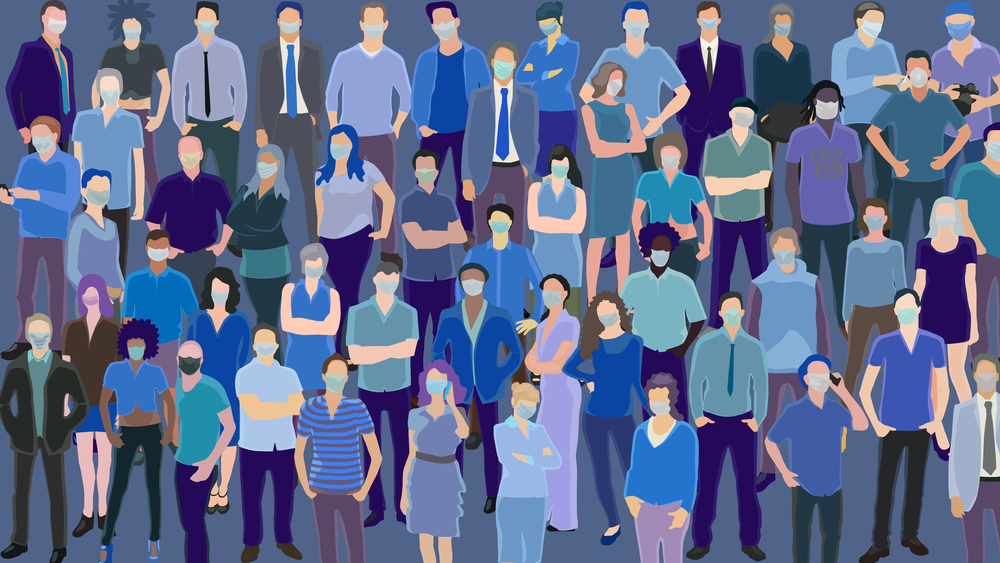The DoD’s COVID-19 Joint Task Force is looking to collaborate with the private sector to develop and deploy apps, algorithms, and analytics tools to identify and combat virus trends and behaviors.
In March, the Department of Defense (DoD) established the COVID-19 Joint Acquisition Task Force (JATF) and tapped the Air Force to address its mission needs in response to the national crisis caused by the coronavirus pandemic.
Through the JATF, the Air Force is issuing solicitations for businesses large and small, contractors, and researchers to innovate technological solutions aimed at better understanding the nature of the coronavirus.
Public and Private Sector Collaboration
On April 6 the COVID-19 Task Force issued a solicitation asking for the participation of both large and small businesses, research institutions, and defense contractors, with one focus being the “welfare of citizens.”
The competitive solicitation seeks “innovative, commercial technologies that propose new solutions and/or potentially new capabilities that fulfill requirements, close capability gaps, or provide potential technological advancements in support of the COVID-19 Response Acquisition Task Force (DAF ACT) mission to provide relief, resilience, recovery, and stability to the nation in response to the COVID-19 pandemic.”
This particular mission has seven focus areas:
- Combating the Spread: Predictive analytics, next hotspot, threat to current activities, decision support, etc.
- Welfare of Citizens: Effects to transportation, movement of people and goods, education and development, physical training, regular HR functions, job transition, etc.
- Readiness: Continuing operations through the outbreak, coordinating with allies and partners, continuing long term projects, etc.
- Logistics: Security and protection, supply chain protection and assessment, etc.
- Industrial Base Impacts: Impacts on small businesses, payments, contracts, large system programs, protection and expansion of critical assets, etc.
- Medical: Telehealth, medical capacity and sustainment, medical supplies and equipment, etc.
- Other: Any solution/proposal that is not covered by the above topic areas but support the national response to the COVID-19 pandemic
“This CSO [Commercial Solutions Opening] may result in the award of prototype projects, which include not only commercially available technologies fueled by commercial or strategic investment, but also concept demonstrations, pilots, and agile development activities that can incrementally improve commercial technologies, existing government-owned capabilities, and/or concepts for broad defense and/or public application(s),” according to the solicitation.
Small Business Innovation
Another solicitation issued on March 30 involves the Small Business Innovation Research (SBIR) Program, in which the Department of the Air Force is inviting small businesses and R&D firms to adopt practices and platforms leveraging Big Data and predictive analytics in the following ways:
- Social Media Analytics: Leverage social media scraping, natural language processing, and artificial intelligence to identify emergent COVID-19 clusters.
- Adware Proximity Algorithm: Leverage commercially available adware data to backtrack confirmed COVID-19 infected individual movements and alert those in proximal distances to self-isolate.
- Mobile Application for Self Reporting: Deploy mobile application to enable COVID-19 symptoms self-reporting via secure means accessible on iOS or Android, feeding chain of command notifications and enabling DoD population data analytics.
- Enterprise Tool for COVID Tracking: Deploy enterprise toolset to provide decision makers COVID-19 instance scalable views throughout the force.
The focus of this approach is to determine the next virus hot spot and threats to Airmen and citizens.
The goal is to support decisions tied to force protection, resource allocation, and operational practice changes, according to the SBIR Commercial Solutions Opening.
While these solicitations are aimed at combating the current coronavirus, the solutions and technology that come from these programs could have a much broader impact on society once the pandemic is over.
What Happens to the Data After the Pandemic?
Many of the solutions that the JAFT seeks involve digitally tracking the population through the likes of social media analytics, as well as apps and algorithms that encourage self-reporting.
But how long will the data be kept after the pandemic is over, and what will it be used for?
In the UK, AI is already being used to snitch on people not staying at home while citizens all over the world continue to tattle on their fellow neighbors — the dream of any police state.
And last week, Google began tracking people’s movements during the pandemic using “aggregated, anonymized data to chart movement trends over time by geography, across different high-level categories of places such as retail and recreation, groceries and pharmacies, parks, transit stations, workplaces, and residential.”
For now, this powerful tracking tool uses “anonymized data,” but will it always remain anonymous?
What happens if quarantine regulations become stricter and more people are arrested for violating stay-at-home orders?
Can companies like Google hand over their tracking data to law enforcement if requested? How about the federal government?
It’s always a slippery slope when you give up personal freedoms and privacy to the government for whatever reason, because once you do, there’s no guarantee you’ll ever get them back.
On govts using data surveillance to combat coronavirus: Q & A with The Sociable team
More on COVID-19 from The Sociable











